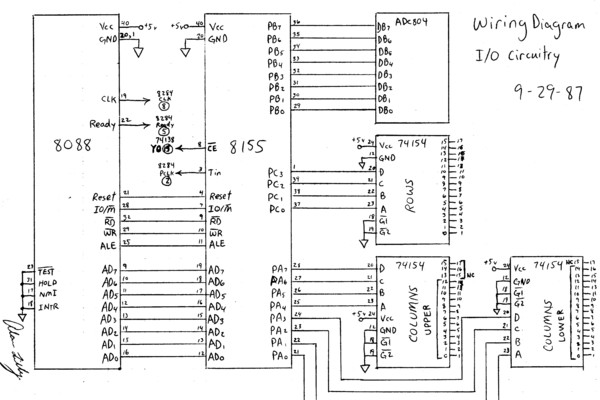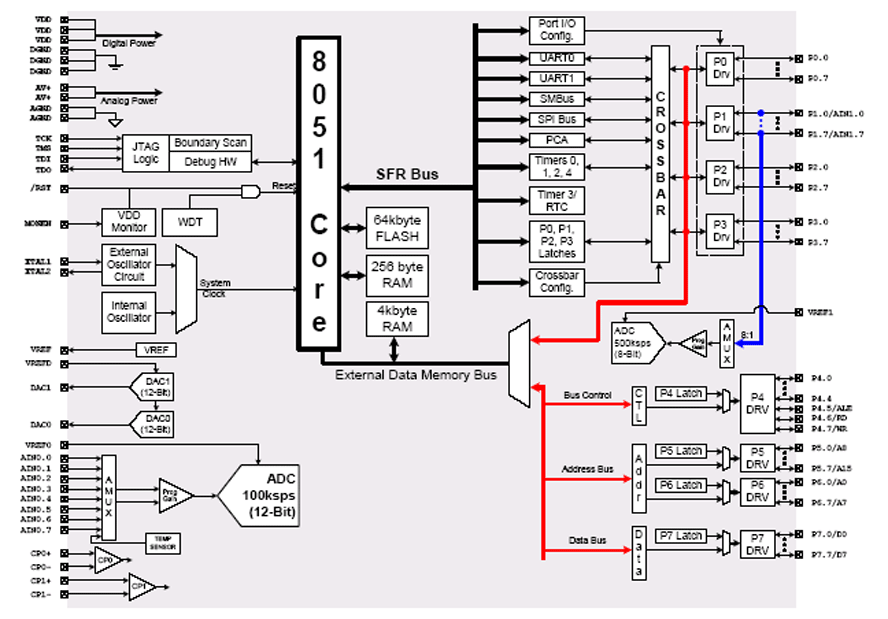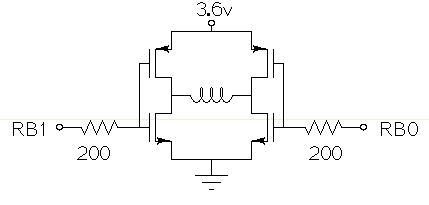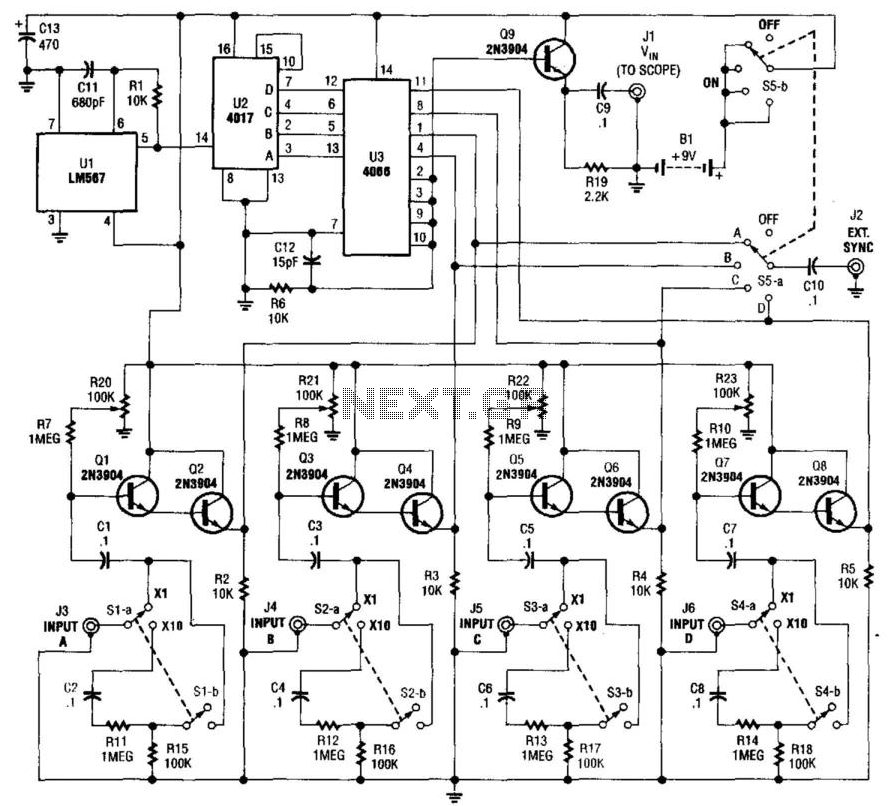
Oscilloscope Xminilab-B on the microcontroller Atmel AVR ATXMEGA32A4
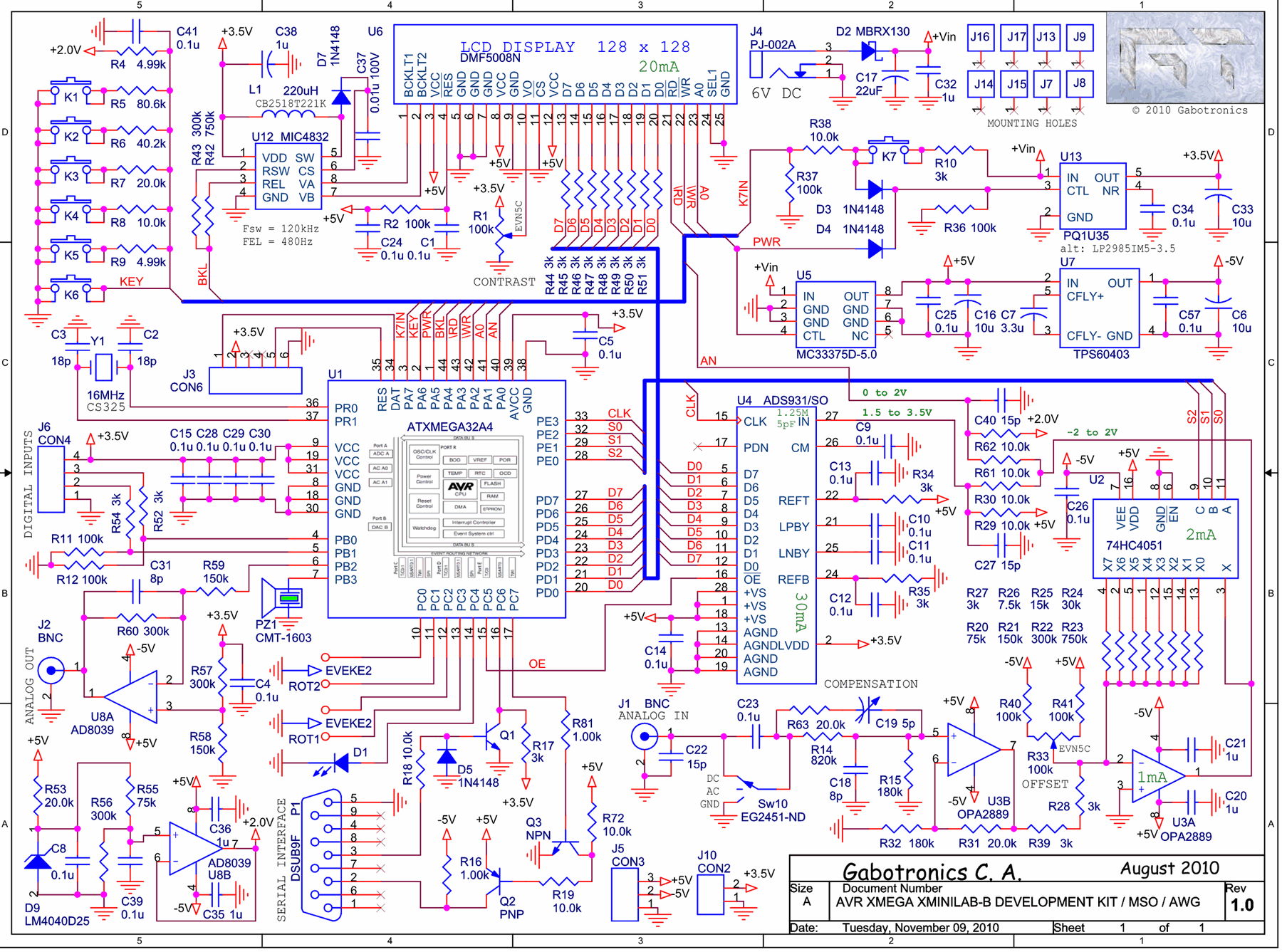
The Xminilab-B oscilloscope is based on the Atmel AVR ATXMEGA32A4 microcontroller. It is designed as a debug board by the Gabotronis company, as noted on rlocman.ru.
The Xminilab-B oscilloscope features a compact and efficient design that leverages the capabilities of the ATXMEGA32A4 microcontroller, which is known for its high performance and low power consumption. This microcontroller supports advanced analog and digital functionalities, making it suitable for a variety of applications in electronic testing and debugging.
The debug board is equipped with multiple input channels, allowing for the simultaneous observation of different signals. Each channel can handle a specific voltage range, and the oscilloscope is capable of displaying waveforms in real-time. The user interface is designed for ease of use, typically featuring a graphical display that presents the waveforms clearly, along with controls for adjusting time base and voltage scale.
Additionally, the Xminilab-B may incorporate features such as trigger functions, which allow users to stabilize repetitive waveforms for better analysis. It may also support data logging capabilities to capture and store signal data for further examination. The integration of the ATXMEGA32A4 microcontroller provides flexibility in programming and customization, enabling users to tailor the oscilloscope's functionality to meet specific testing requirements.
Overall, the Xminilab-B oscilloscope represents a valuable tool for engineers and developers, facilitating efficient debugging and analysis of electronic circuits. Its design reflects a combination of innovative technology and practical application, making it a noteworthy addition to the field of electronic instrumentation.Oscilloscope Xminilab-B on the microcontroller Atmel AVR ATXMEGA32A4 electro suite in rlocman The Gabotronis company produces debug board Oscilloscope Xminilab-B on the microcontroller Atmel AVR ATXMEGA32A4 electro suite. As we found in rlocman.ru, The Gabotronis company produces debug board.. 🔗 External reference
The Xminilab-B oscilloscope features a compact and efficient design that leverages the capabilities of the ATXMEGA32A4 microcontroller, which is known for its high performance and low power consumption. This microcontroller supports advanced analog and digital functionalities, making it suitable for a variety of applications in electronic testing and debugging.
The debug board is equipped with multiple input channels, allowing for the simultaneous observation of different signals. Each channel can handle a specific voltage range, and the oscilloscope is capable of displaying waveforms in real-time. The user interface is designed for ease of use, typically featuring a graphical display that presents the waveforms clearly, along with controls for adjusting time base and voltage scale.
Additionally, the Xminilab-B may incorporate features such as trigger functions, which allow users to stabilize repetitive waveforms for better analysis. It may also support data logging capabilities to capture and store signal data for further examination. The integration of the ATXMEGA32A4 microcontroller provides flexibility in programming and customization, enabling users to tailor the oscilloscope's functionality to meet specific testing requirements.
Overall, the Xminilab-B oscilloscope represents a valuable tool for engineers and developers, facilitating efficient debugging and analysis of electronic circuits. Its design reflects a combination of innovative technology and practical application, making it a noteworthy addition to the field of electronic instrumentation.Oscilloscope Xminilab-B on the microcontroller Atmel AVR ATXMEGA32A4 electro suite in rlocman The Gabotronis company produces debug board Oscilloscope Xminilab-B on the microcontroller Atmel AVR ATXMEGA32A4 electro suite. As we found in rlocman.ru, The Gabotronis company produces debug board.. 🔗 External reference
